Sina Global Geography, Beijing, Jan. 7, 2011 - According to the U.S. National Geographic website, a variety of factors such as climate change, environmental degradation, land desertification, and population explosion pose a serious threat to the survival of mankind, threatening food supply and security, and threatening environmental sustainability. It is quite a daunting task to find enough land and water to ensure the food needs of seven billion people around the globe. As a result, countries such as Saudi Arabia, the United States, South Africa and China have come up with ways to green their deserts. The National Geographic website has launched a series of reports on "Water Grabbers: The World's Desperate Need for Fresh Water", which introduces how these countries have adopted modern and advanced technologies to realize the greening and cultivation of deserts. Of course, some of these technologies and methods are also short-sighted and unsustainable.
1.Round wheat field in Saudi Arabia
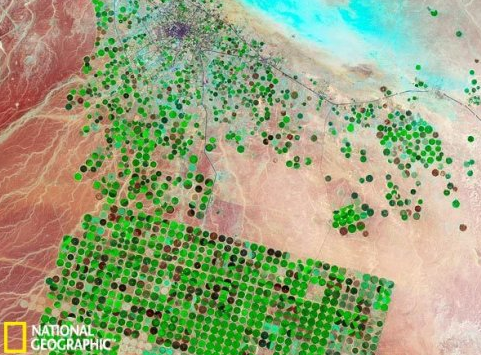
In 2012, a green circular wheat field filled the Wadi As-Selhan basin in Saudi Arabia, resembling a circle of wheat. A series of NASA satellite images from 1987 to the present show that an agricultural empire is gradually emerging in the same location in the region. Saudi farmers also utilize groundwater resources for agricultural production. This groundwater, dating back 20,000 years, when milder climatic conditions created the conditions for water to be stored in underground aquifers. On the surface, these circular irrigation zones are about 1 kilometer in diameter, which is close to the depth of the aquifer, and are mainly irrigated by pumping groundwater using center pivot irrigation systems.
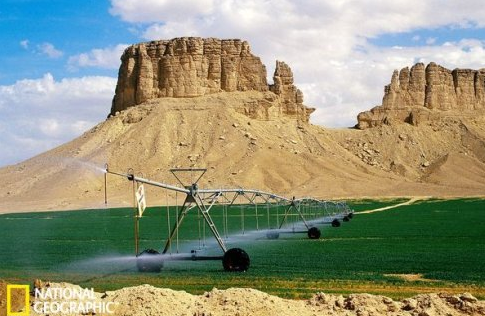
In the Saudi desert, locals use an automatic rotating sprinkler system to irrigate wheat. It is quite a daunting task to find enough land and water to ensure the food needs of the world's seven billion people. Therefore, some countries like Saudi Arabia came up with ways to green the desert. It is also true that they have once transformed a barren land into a lush oasis through modern irrigation techniques, even though some of the techniques and means were a short-sighted act. In Saudi Arabia, although much of the country is a sandy desert, it is fortunate that there is an abundance of groundwater beneath the surface. Forty years ago, the aquifers there held about 500 cubic kilometers of water, enough to fill the entire Lake Erie. However, over the past few decades, about four-fifths of the groundwater resources have been pumped up for agricultural irrigation. The average precipitation in the region is less than 200 millimeters per year, which is simply not enough to replenish the amount of groundwater that has been pumped. The Saudi government claims that irrigated wheat production will be extinct by 2016 due to the dwindling availability of groundwater and the large amount of energy consumed to pump it. In order to ensure domestic food needs, Saudi Arabia will gradually seek agricultural help from abroad.
2.Nevada Round Wheat Field, USA
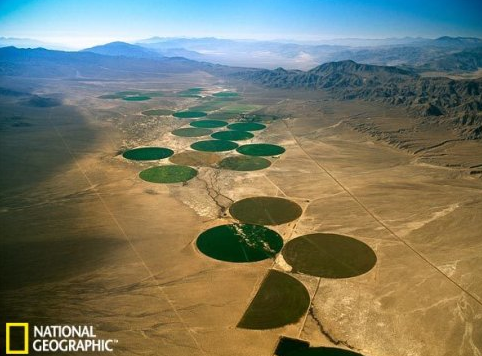
In the Nevada Desert, a center pivot irrigation system brings life to the barren land. The Nevada Desert's water sources are varied and include both groundwater and river water drawn from the Colorado River. Globally, freshwater resources used for food production, textiles, and other areas account for nearly two-thirds of all freshwater consumption. In particularly arid areas, this proportion may be as high as 90 per cent, as some of the water evaporates before it even sprays to the surface, and a significant proportion of it does.
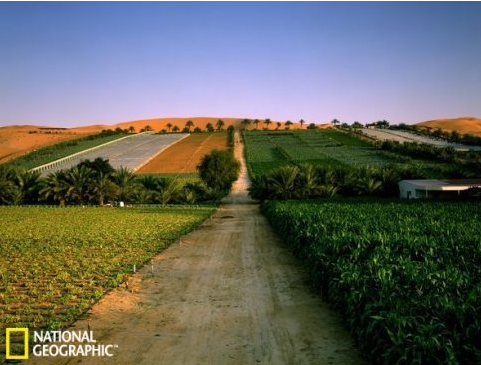
3.Oasis Wheat Fields, UAE
The Riva Oasis is a true oasis in the desert. Rows of lush green crops grow in this oasis. The Riva Oasis is one of the largest oases in the Arabian Peninsula and includes many Bedouin villages and farms. Since the 16th century, local farmers have relied on groundwater. Today, this oasis grows grains, vegetables, and a variety of fruit trees. For visitors from neighboring Persian Gulf cities, it is a symbol of luxury hotels and a pleasure destination.
4.South African Desert Vineyards
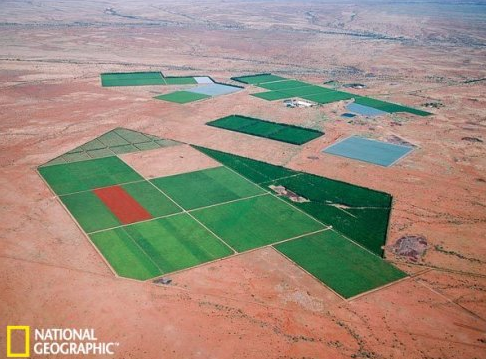
Vineyards stand out in this desert in the Northern Cape province of South Africa. This famous wine-producing region is close to the Aughrabi Falls National Park. In the semi-arid climate, these carefully cultivated vines flourish despite the scarcity of fresh water resources. It is reported that for every glass of wine produced locally, it often takes about 240 liters of water, which is mainly used for irrigation, while about 500 liters of water are needed to produce 0.5 kilograms of wheat.
5.Irrigated cotton fields in China
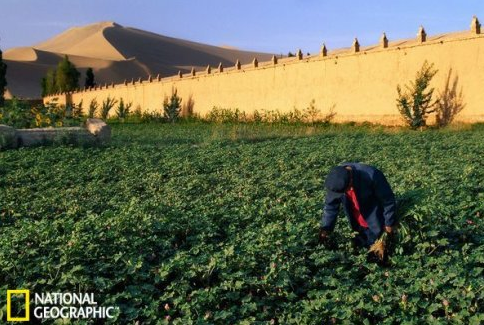
A farmer works in a cotton field near Dunhuang, Gansu Province, China. Dunhuang, a stop on the Silk Road, was once known as "Shazhou", an oasis. For thousands of years, farming has been a traditional industry in the area. As the population grows rapidly, there is a growing demand for irrigation water, and more water needs to be drawn from nearby river systems and groundwater. A professor of hydrology at Lanzhou University said, "I think this is an ecological danger. The problem is human impact, people are overusing water beyond the sustainable capacity of the region's water resources.
6.Kalahari Desert Orchards

Bright green vines twine around the rocky desert walls of South Africa's Northern Cape. In the Kalahari Desert, most of these vineyards and orchards are located along the fertile Olinki River, which is also one of the extremely popular tourist destinations. The Kalahari Desert is an incredibly diverse region of both barren desert and vast rangelands, and includes one of the world's most pristine wetlands. This semi-arid desert stretches from South Africa northward to Namibia and Botswana.
7.Desert biofuels

The Sahara Forest Engineering organization plans to build a sustainable ecological oasis in the desert. In this outline vision, the organization hopes to build businesses in deserts around the world that will provide local food, water, jobs and clean energy. The organization has received financial sponsorship from the Qatar Fertilizer Company and the Norwegian company Yara International Agriculture. In Qatar, a simulation facility is being built where engineering managers will be able to test algae-based bioculture technology, salt water purification technology, and solar thermal energy utilization technology, among other things. The bioreactor will be able to convert algae into energy-rich biofuels through photosynthesis. If the project is successful, similar models could be installed in deserts around the world.
8.Desert Solar
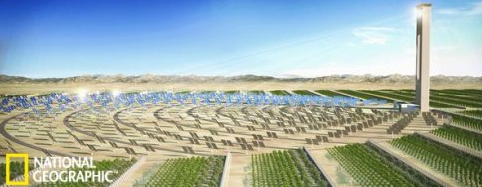
The use of solar towers to produce clean energy is also part of the Sahara Forest Project program. Such solar towers will utilize mirrors to reflect the desert's intense sun rays onto water pipes and boilers to produce steam electricity. The Sahara Forest Project organization believes that the desert will be sustainably greened. "The Sahara Forest Project is about utilizing all that we have, such as desert, salt water, and carbon dioxide, to produce what we must have, such as food, water, and energy.